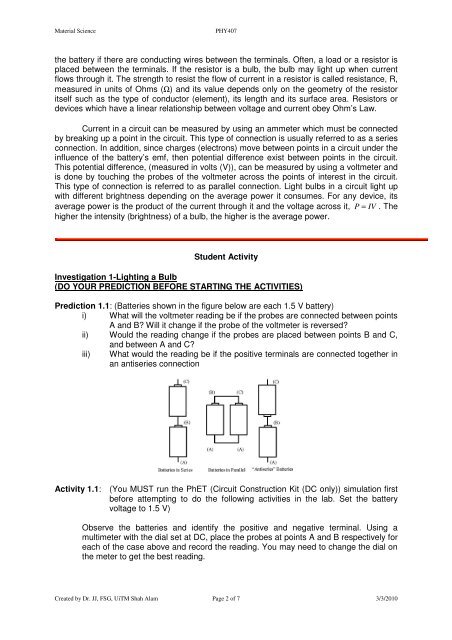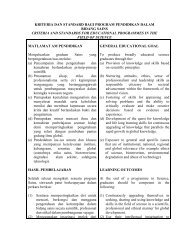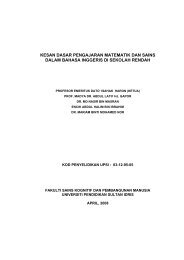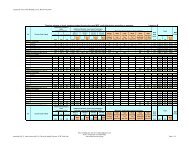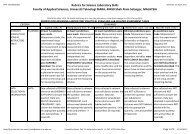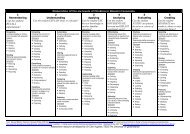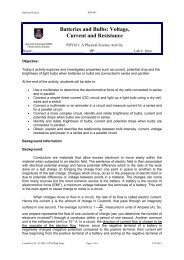Basic Physics II Evidences - DrJJ - UiTM
Basic Physics II Evidences - DrJJ - UiTM
Basic Physics II Evidences - DrJJ - UiTM
You also want an ePaper? Increase the reach of your titles
YUMPU automatically turns print PDFs into web optimized ePapers that Google loves.
Material SciencePHY407the battery if there are conducting wires between the terminals. Often, a load or a resistor isplaced between the terminals. If the resistor is a bulb, the bulb may light up when currentflows through it. The strength to resist the flow of current in a resistor is called resistance, R,measured in units of Ohms (Ω) and its value depends only on the geometry of the resistoritself such as the type of conductor (element), its length and its surface area. Resistors ordevices which have a linear relationship between voltage and current obey Ohm’s Law.Current in a circuit can be measured by using an ammeter which must be connectedby breaking up a point in the circuit. This type of connection is usually referred to as a seriesconnection. In addition, since charges (electrons) move between points in a circuit under theinfluence of the battery’s emf, then potential difference exist between points in the circuit.This potential difference, (measured in volts (V)), can be measured by using a voltmeter andis done by touching the probes of the voltmeter across the points of interest in the circuit.This type of connection is referred to as parallel connection. Light bulbs in a circuit light upwith different brightness depending on the average power it consumes. For any device, itsaverage power is the product of the current through it and the voltage across it, P = IV . Thehigher the intensity (brightness) of a bulb, the higher is the average power.Student ActivityInvestigation 1-Lighting a Bulb(DO YOUR PREDICTION BEFORE STARTING THE ACTIVITIES)Prediction 1.1: (Batteries shown in the figure below are each 1.5 V battery)i) What will the voltmeter reading be if the probes are connected between pointsA and B? Will it change if the probe of the voltmeter is reversed?ii) Would the reading change if the probes are placed between points B and C,and between A and C?iii) What would the reading be if the positive terminals are connected together inan antiseries connectionActivity 1.1: (You MUST run the PhET (Circuit Construction Kit (DC only)) simulation firstbefore attempting to do the following activities in the lab. Set the batteryvoltage to 1.5 V)Observe the batteries and identify the positive and negative terminal. Using amultimeter with the dial set at DC, place the probes at points A and B respectively foreach of the case above and record the reading. You may need to change the dial onthe meter to get the best reading.Created by Dr. JJ, FSG, <strong>UiTM</strong> Shah Alam Page 2 of 7 3/3/2010


